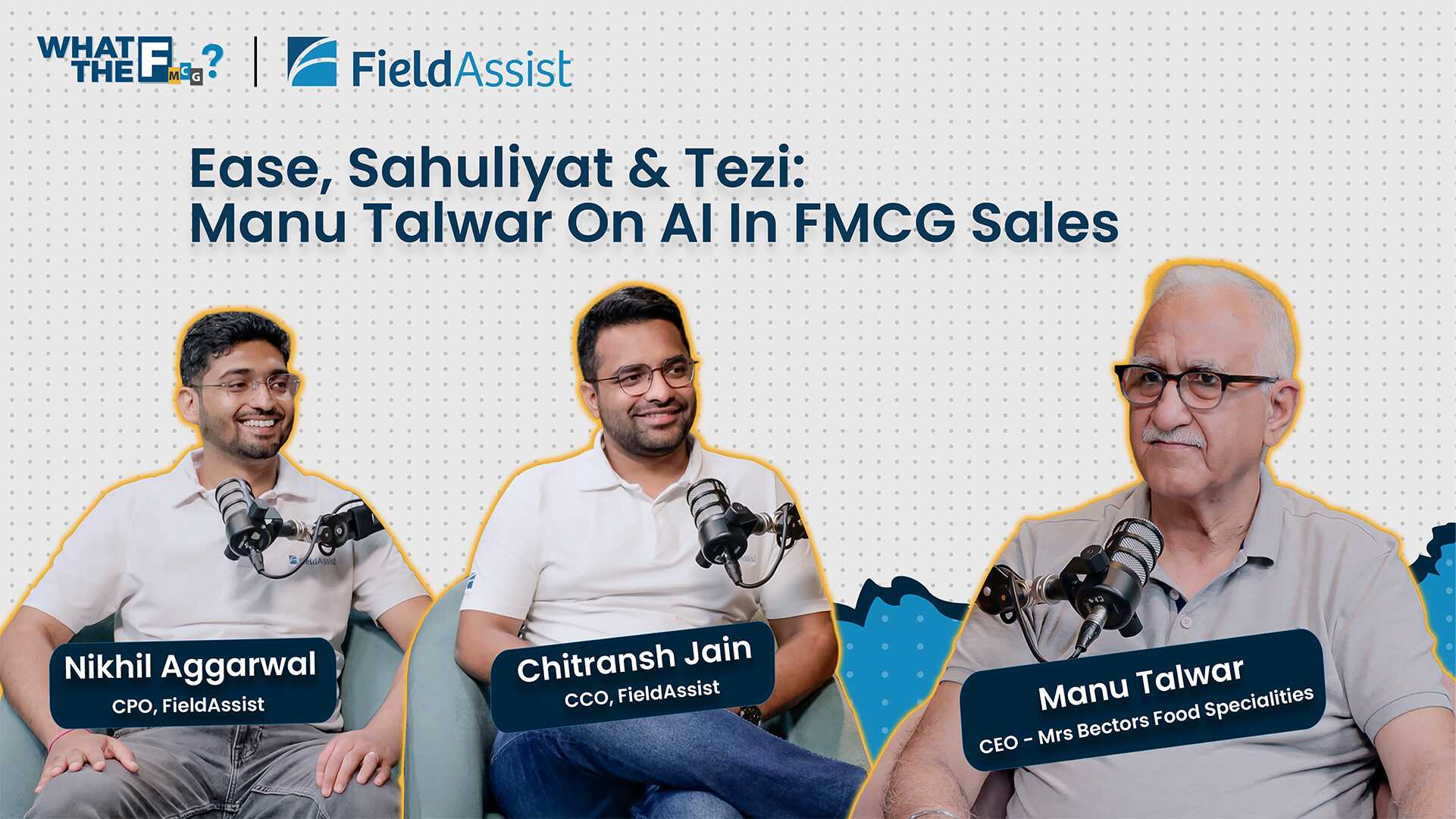6 FMCG Sales Metrics that Make the Difference | FieldAssist
Explore the top 6 FMCG sales metrics or FMCG KPIs to decide the effectiveness of any FMCG salesman and boost your sales. Let’s look at each of them.

There is always a two-way process while expanding the sales for any FMCG company, you can either increase your customer base, i.e. horizontal growth of your brand by covering FMCG Sales Metrics like Coverage/Beat Strike rate, or you can sell more within the existing customers by tracking Range Selling, Lines Cut, productivity, etc.
For any salesman in the FMCG industry, it’s vital to understand these FMCG sales KPIs and execute them effectively in the field. This blog seeks to spell out the top 6 FMCG sales metrics or FMCG key performance indicators that can easily decide on the effectiveness of any FMCG salesman. They are
- Outlet Coverage
- Productivity (Effectively Covered Outlet- ECO)
- Product Line Sold (Range Selling)
- Bill Cut (Lines Cut per Call)
- Throughput (Average Sales)
- Must Sell Products (MSPs)
Let’s look at each of them one-by-one.
Top 6 FMCG Sales Metrics or FMCG KPIs

Measure insights and ensure your FMCG brand’s success
Request Demo
1. Outlet Coverage
This FMCG sales metric is directly related to the number of outlets getting covered by an FMCG salesman within his quota of outlets to be covered in a specified time frame. Most often, this metric is measured on a day-to-day basis. If the salesmen are unable to meet their defined coverage area mainly on account of ineffective beat planning. On the other hand, an effective beat plan will enable a salesman to effectively handle order collection and visual merchandising in outlets allotted to them.
Outlet coverage is also impacted by improper outlet segmentation and poor beat health. To improve this metric, a salesperson must focus on improving the number of Total Calls (TC) by being able to average at least 40-45 calls per day. The onus should be on improving the number of productive calls as it can significantly improve coverage. This sales activity can be easily done by using the power of real-time data and effective tracking FMCG Sales Metrics.
2. Productivity (Effectively Covered Outlet- ECO)
In the FMCG sector, ECO or Effectively Covered Outlet is a metric that defines the number of outlets out of a total number of outlets on a route, market, or territory that are making at least one sales memo in a month. This FMCG Sales Metrics allows the sales team to assess the number of active outlets within a given territory, route, or market. With our recently launched module, beat-o-meter, sales teams can unlock the beat potential to convert inactive and dormant outlets to active ones effectively.
3. Product Line Sold (Range Selling)
Among FMCG sales teams, product line sales, or range selling refer to the marketing strategy associated with selling several related products. It is an effective strategy wherein similar products with close functions are sold to the same outlet. The outlet acquires such products with the belief that they will be able to persuasively sell such products to the customer related to the customer’s original choice. For instance, a company would sell hair care products that could include Hair Shampoo, Hair Wax, and Hair Gel within the same product line.
This tactic allows an FMCG company to diversify its product base, brings in more visibility in the shelf space, and enables the brand to attract more footfalls to the outlet. It is a metric that can incentivize primary and secondary sales force when they sell a stipulated number of lines per call.
4. Bill Cut (Lines Cut per Call)
This FMCG sales metrics KPI refers to the metric that defines the number of calls a salesman would undertake within a given month. Bill cut is calculated by multiplying the total number of outlets within the territory by 4 (one visit to an outlet in a week, four weeks in a month). This gives the total number of possible calls that can be made by a salesman. To arrive at the bill cut target, this total number is multiplied by the productivity norm of 60% (variable) to give the expected number of calls to be undertaken by a salesman in the assigned territory.
Mathematically expressed as:
Total Number of Calls = Total Number of Outlets x 4
Bill Cut Target = Total number of Calls x 60%
This FMCG sales metrics will allow the sales head to set targets for his salesmen. The greater number of calls a salesman can make per week, the better his chances to reach targets within the stipulated time.
5. Throughput (Average Sales)
This FMCG Sales Metrics is calculated by dividing the quantum of sales made by a salesperson for an entire day by the total number of outlets visited by him during the daily beat. Throughput is directly dependent on the outlet stock levels, predicted consumption patterns, drop size of the outlet, and even the launch of new products. This value is known to peak during the festive season. And it is considered best to record this data immediately at the end of the day for analysis of consumption patterns and market forecasting.
6. Must Sell Products (MSPs)
This FMCG Sales Metrics KPI refers to the tactic of selling the right product to the right outlet. It is a given fact that an FMCG salesman would not be able to sell all products to an outlet. But he can be sure about the sale of specific products that the outlet would readily buy because of the existing demand. Such products are known as Must Sell Products or SKUs (MSP or MSS).
An FMCG company can improve this metric by selling SKUs or products to outlets based on the economic demography it’s catering to. For instance, certain kinds of chocolates are only known to sell only in outlets that cater to the upper-middle-class customer segment. Hence the company can make those chocolates an MSP in those types of outlets.
Track the right FMCG Sales Metrics to achieve your business goals
Request Demo
Watch Out Our Latest Interview Series
As we talk about going digital more than ever before, it’s imperative for FMCG brands to include these FMCG metrics in their sales automation and business intelligence tools. For an organization like ours, tracking these metrics for our clients through mobile apps and personalized FMCG KPI dashboards has always enhanced their team performance and improved brand visibility. We are helping 550+ FMCG organizations improve their sales process with real-time and measurable data. Reach out to us as we will help you transform your sales today!






